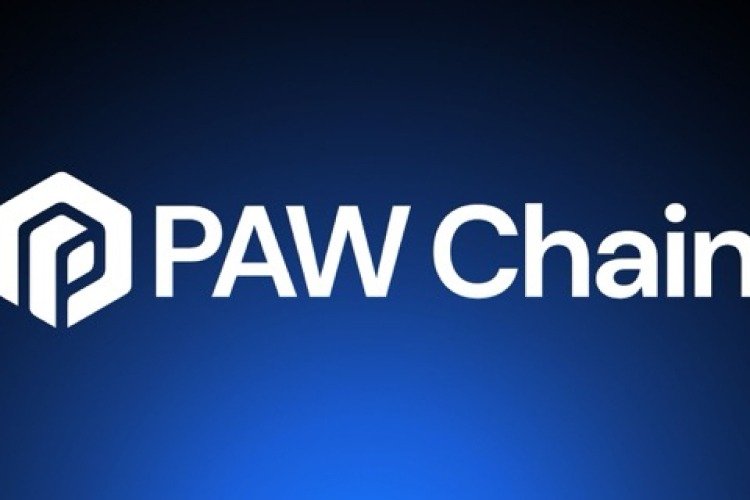How PAW Chain's Layer 3 Blockchain is Bridging the Blockchain Divide

As the blockchain ecosystem grows, the need for seamless interaction between different networks becomes increasingly important. Multi-chain interoperability is essential for the future of decentralized finance (DeFi), decentralized applications (dApps), and broader blockchain adoption. PAW Chain is leading this evolution with its innovative Layer 3-centric architecture, designed to bridge the divide between disparate blockchain networks.
The Challenge of Interoperability
Most blockchains currently operate in isolation, each with its own set of rules, consensus mechanisms, and token standards. This lack of interoperability has led to fragmented ecosystems where users and developers are confined to a single platform, limiting broader collaboration and innovation. For DeFi, this means limited liquidity, inefficiencies in trading, and barriers to accessing a diverse range of financial products across different blockchains.
Interoperability issues also hinder the potential for decentralized applications to reach their full potential. Developers often face significant challenges when trying to integrate their applications across multiple blockchains, leading to increased development costs and complexities. This fragmentation can also lead to user frustration, as they need to manage multiple wallets and interfaces to interact with different dApps.
PAW Chain’s Layer 3 Solution
PAW Chain addresses these challenges with a Layer 3 architecture specifically designed to facilitate multi-chain interoperability. Unlike traditional blockchains that focus on Layer 1 (the core network) and Layer 2 (scaling solutions), PAW Chain’s Layer 3 acts as a connective layer that enhances communication between different blockchains. This enables assets and data to move freely and securely across multiple networks, fostering a more integrated and efficient blockchain ecosystem.
The Layer 3 architecture of PAW Chain is built to handle the complexities of cross-chain transactions and data transfers, ensuring that these processes are both secure and efficient. By abstracting the interoperability layer, PAW Chain allows developers to focus on building their applications without worrying about the underlying technical details of cross-chain communication.
Key Benefits of PAW Chain’s Interoperability
-
Seamless Deployment: PAW Chain’s multi-chain deployment allows projects to operate across multiple blockchains using a single contract address and liquidity pool. This removes the typical costs associated with multi-chain setups. Projects deployed on PAW Chain gain instant presence on all connected networks, including Base, Polygon, BNB, Arbitrum, and Ethereum, with more chains to be supported soon.
This seamless deployment capability simplifies the development process and reduces the time-to-market for new dApps, making it easier for developers to launch and scale their projects. -
Broader Access to dApps: Developers can build dApps that operate across multiple blockchains, reaching a wider audience and creating more versatile applications. This broader access not only increases the potential user base for dApps but also enhances the overall user experience by providing more options and flexibility.
Multi-chain dApps can leverage the strengths of different blockchains, such as the security of Ethereum, the speed of Solana, and the low transaction costs of Binance Smart Chain, to deliver superior products to their users. -
Improved User Experience: Users no longer need to navigate different platforms; they can interact with a unified ecosystem that offers smoother, more intuitive experiences and cost savings. By consolidating various blockchain networks into a single, cohesive platform, PAW Chain simplifies the user journey and reduces the friction associated with multi-chain interactions.
This improved user experience can drive greater adoption of blockchain technology by making it more accessible and user-friendly, even for those who are not technically savvy.
-
Reduced Fragmentation: PAW Chain’s approach reduces the fragmentation of the blockchain space, promoting collaboration and innovation across the industry. By enabling seamless interoperability, PAW Chain encourages developers to collaborate on multi-chain projects and share resources, leading to more innovative solutions and faster technological advancements.
Reduced fragmentation also means that liquidity and other resources are not locked up in isolated ecosystems, allowing for more efficient use of these resources across the entire blockchain space.
The Road Ahead
PAW Chain’s focus on multi-chain interoperability through its Layer 3 architecture is a significant step forward in addressing one of the most pressing challenges in the blockchain industry. By bridging the gap between different networks, PAW Chain enhances the functionality and accessibility of DeFi and dApps, laying the groundwork for a more interconnected and robust blockchain future.
As the technology matures, PAW Chain’s Layer 3 could become a critical component in the global blockchain ecosystem, enabling new possibilities for developers, users, and businesses alike. This innovation positions PAW Chain to lead the charge in making blockchain technology more inclusive, efficient, and powerful.
PAW Chain’s commitment to continuous improvement and adaptation ensures that it will remain at the forefront of blockchain innovation. As more developers and projects adopt its Layer 3 technology, the entire blockchain ecosystem will benefit from increased interoperability, enhanced security, and greater efficiency.
For more information, visit PAW Chain.